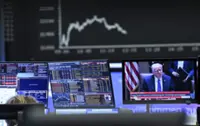
It is expected that the clout of BRICS will likely grow, solidifying its voice to speak up for its member countries’ interests and development rights, especially for the developing economies. — Bloomberg
Fifteen years since its founding on 16 June 2009, what started as a loose and informal grouping has been expanding gradually into a collective platform and networking, placing the BRICS+ bloc comprising 10 countries – Brazil, Russia, India, China, South Africa, Egypt, Ethiopia, Iran, Saudi Arabia and the United Arab Emirates or UAE – as an economic and political force.
The BRICS+ grouping has attracted the Global South as a voice in economic, trade, financial and investment matters.
BRICS+ by the numbers
The intergovernmental grouping carries significant demographic and economic weight. It is home to 45% of the world’s population, substantially higher than almost 10% for the G7 comprising the United States, Canada, Japan, Britain, Germany, France and Italy.
It claims 35.2% of global gross domestic product (GDP) based on purchasing power parity versus the G7’s 29.3% share.
It is also the destination of 27.4% of global foreign direct investment (FDI) inflows while also accounting for around 40% of both crude oil production and exports.
China, with a population of 1.4 billion, is the largest economy in the BRICS+ grouping, with GDP of US$18 trillion or 65.4% of the group. This is followed by India, with its population of 1.4 billion, at U$3.4 trillion or 12.4% of the total. Russia comes next, with its population of 144.2 million, at US$2.2 trillion or 8.2% of the total.
Malaysia, together with Thailand, are among the first countries in Asean expressing interest in joining the BRICS+ club. It was reported that more than 30 countries have signalled their intent for BRICS+ membership.
Malaysia’s total trade with BRICS+ accounted for 23.2% (RM611.3bil) of Malaysia’s total external trade in 2023 (23.7% in 2019). Exports to BRICS+ made up 18.9% of the country’s total exports.
China remains our largest trading partner (17.1% of Malaysia’s total trade) with an export share of 13.5% in 2023. Exports to India stood at 3.2% and the UAE at 1% while the rest of members’ share was negligible or marginal at between 0.1% and 0.4%.
In 2023, the Malaysian Investment Development Authority’s approved investment of BRICS+ totalled RM15.2bil or 2.3% of total FDI approvals. China has the highest amount at RM14.5bil or 7.7% of the total, while other BRICS+ members’ share was negligible.
In terms of total approved investment projects in the manufacturing sector, BRICS+ accounted for 9.4% of total approvals at a value of RM12.1bil in 2023.
What is BRICS+ buying into?
An understanding of the nature of BRICS+ would allow us to assess how the grouping can function effectively in aligning on global topics and issues of their common interests as well as to forge mutually collaborative in economic, financial, trade and investment opportunities.
We have to reckon that BRICS+ countries are very diverse in terms of political systems, institutional frameworks, economic management, financial systems, social and cultural backgrounds. Some countries are political rivals.
Yet, the expansion of BRICS+ challenges the strong dominance and influences of the West, G20 and G7 as evidenced in their representation in the World Bank and International Monetary Fund.
Ironically, within the G20 countries, the seven most-advanced members are strengthening their ties through the G7, while six large developing economies are asserting their own voices within BRICS+.
How can BRICS+ cause a shift in the global economic and financial order, albeit facing hurdles ahead?
Firstly, BRICS+ member countries are the world’s biggest producers and exporters of energy, food and minerals, giving them the sustainability and stable supply of industrial feedstocks.
Based on a Bulletin report published by Banque de France, in 2021, BRICS+ accounted for 36% of global exports of crude oil, 34% of refined oil, 51% of soybeans, 42% of rice, 29% of iron ore, 51% of magnesium, 53% of graphite, and 47% of diamonds.
The abundant resources would ensure supply chain security in a profoundly complex geo-economic landscape and international trade system.
Secondly, it could promote a deepening of economic and trade integration.
BRICS+ made up 19.2% of total world trade; and 27.4% of total FDI inflows. Some members of BRICS+ have free-trade agreements (FTAs) with each other through blocs such as the Gulf Cooperation Council and Pan-Arab Free Trade Area.
China has been a dominant driver of economic integration in the bloc given its role as a supplier of consumer and industrial goods as well as an importer of commodities.
China is a major exporter of electric vehicles, solar panels, and heavy machinery. India is a leading producer of bauxite, iron ore, and zinc ore. Brazil’s major exports are soybeans, crude petroleum, refined petroleum and iron ore.
Currently, there is no FTA covering the entire BRICS+.
Prior to the expansion of BRICS+, China has proposed a BRICS FTA to boost wider trade ties in the grouping through binding commitments on tariff elimination. But, India, Brazil, Russia and South Africa have cold-shouldered China’s attempt.
Thirdly, project and development financing through the New Development Bank (NDB), which is capitalised at US$100bil, and the China-led Asian Infrastructure Investment Bank (AIIB), to complement China’s Belt and Road Initiative.
The AIIB is the world’s second-largest multilateral development bank, in which Egypt, India, Russia, Saudi Arabia, and UAE are shareholders.
It was reported that by 2023, both NBD and AIIB combined had committed more than US$71bil in credit in infrastructure, public health, and clean energy.
Fourthly, it would deepen cooperation in science, technology and innovation. China has become a powerhouse in new technologies, digitalisation and artificial intelligence (AI) and can share its wealth of knowledge and know-how with countries in need.
The BRICS+ countries contributed a sixth of worldwide research and development spending and a quarter of all science and technology research papers. They share broad collaboration potential in bio-tech, climate change, new-energy development, and space technologies.
China’s National Space Administration (NSA) is working with BRICS+ countries on a remote-sensing satellite programme as part of a data-sharing deal signed in 2021 that helps member countries to better monitor environmental changes and natural disasters using satellites data.
Fifthly, it deepens financial cooperation and payment to reduce reliance on the US dollar as a reserve currency through the development and multilateralisation of payment agreements. Over-reliance on the US dollar and euro not only render BRICS+ countries vulnerable to the US dollar’s fluctuations but also exposes them to US and European economic sanctions. Hence, BRICS+ countries should accelerate the de-dollarisation efforts amid not a smooth journey ahead.
What economic benefits can Malaysia see from joining BRICS+?
Malaysia is expected to benefit from the expansion of trade and investment deriving from the economic expansion of BRICS+, particularly China, India, South Africa and Saudi Arabia. China has been Malaysia’s largest trading partner for 15 consecutive years since 2009 and India was Malaysia’s 12th largest global trading partner in 2023. China and Malaysia are members of the Regional Comprehensive Economic Partnership and Asean–China Free Trade Area.
Malaysia can expand its export market goods and services in BRICS+ member countries through exploring the signing of FTAs and also the facilitation of trade.
As Russia, China and Brazil possess high technological capabilities in aerospace, AI and defence technology, Malaysia can collaborate on research and development and innovation, access the latest technologies and knowledge transfer that help to enhance our domestic industries’ technical capabilities in space exploration, aircraft development, satellite technology, AI applications, and defence technology.
Additionally, Malaysia can tap financing from the NDB and AIIB to finance projects in these technology, aerospace and AI sectors as well as green projects. We can work in promoting exchanges and cooperation with BRICS+ countries in the fields of education, knowledge and technical exchange programmes at people-to-people level.
As Malaysia will be the chair of Asean in 2025, it is in the driver’s seat to revive the Asian Monetary Fund and dedollarisation agenda, starting with Asean and in BRICS+. Malaysia has won the backing of China to revive the plan for an Asia-centred multilateral finance institution, which was mooted 26 years ago in the aftermath of 1997-1998 Asian Financial Crisis.
Amid facing the hurdles, Malaysia’s campaigning for the de-dollarisation also aligns with China, Russia, Brazil and the European Union as they are already trying to shift away from a reliance on the US dollar.
In conclusion, It is expected that the clout of BRICS+ will likely grow, solidifying its voice to speak up for its member countries’ interests and development rights, especially for the developing economies. The BRICS+ grouping has to manage the disparate priorities of its member nations based on mutual trust, respect and understanding.
Lee Heng Guie is Socio-Economic Research Centre executive director. The views expressed here are the writer’s own.








































